We may receive a commission when you use our affiliate links. However, this does not impact our recommendations.
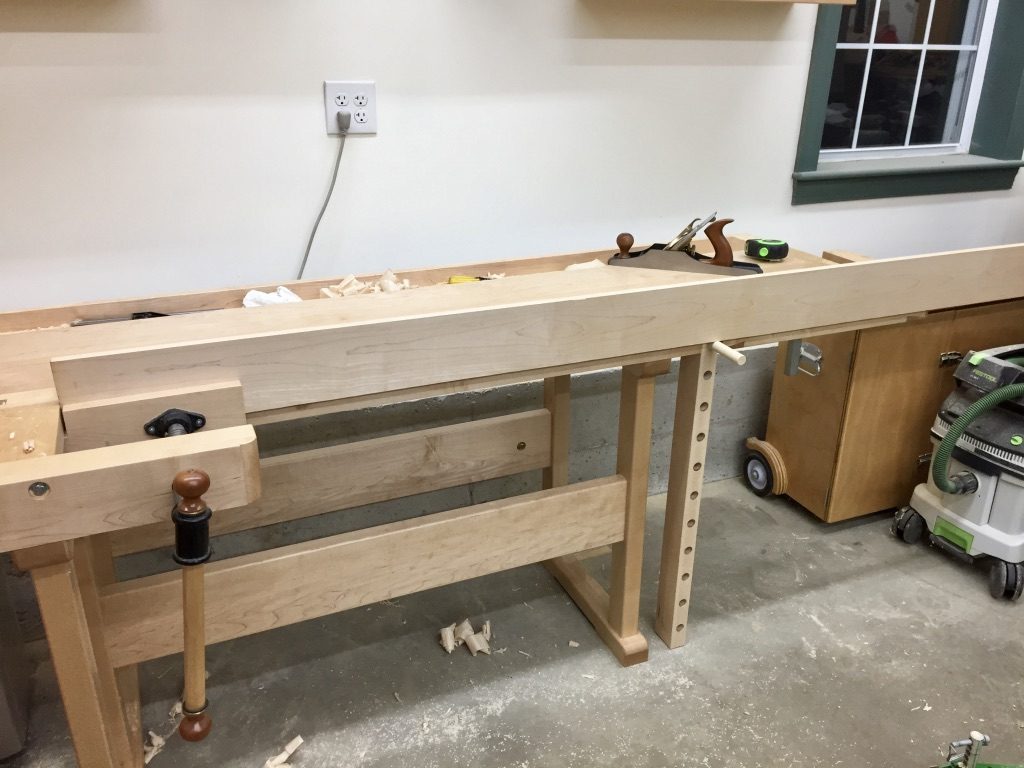
Deadman helping to hold a long piece of wood.
A stout “deadman” or “bench slave” is one of simplest jigs you can build, and it can be an invaluable addition to any workbench with a tail vise. You clamp this fixture, which is essentially a heavy block of wood that rests on the floor, into your tail vise and set a pin into an appropriate hole to support the end of long pieces of wood you want to work at the bench at an appropriate height.
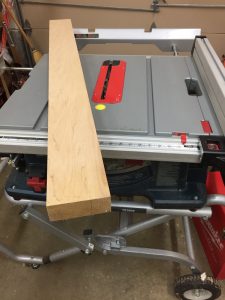
Made from a single piece of wood.
I made mine from some scrap hard maple left over from building my workbench. I milled the blank to 35.5″ long x 3″ wide by 1-3/4″ thick and planed off any mill marks. I also rounded off all the edges. A block plane or 1/8″ roundover bit in a router gets that job done.
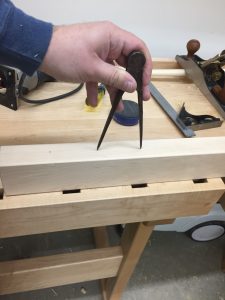
Use dividers to walk off the hole locations.
I wanted 11 evenly spaced holes to match what Frid had, and used a pair of dividers to walk off the holes. The first hole is 3″ down from the top of the blank, and each hole below that is spaced at 3″ on center from the previous hole. This leaves the bottom hole a little closer to the bottom of the blank, so if I ever want to support a very short piece I can flip the deadman around and use that alternate spacing.
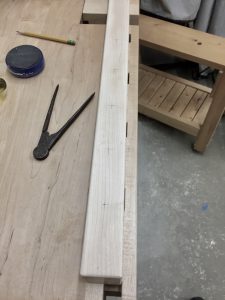
Laying out the pin holes with a pair of dividers.
Next up I used a 7/8″ Forstner bit in my drill press along with a clamped-on fence behind the workpiece to drill 2-3/4″-deep holes. This depth maximizes how much dowel pin is in the holes and leaves 1/4″ of wood to stop the pin from going all the way through and falling out under the bench. It’s also about the limit of how deep I could go with the bit I had.
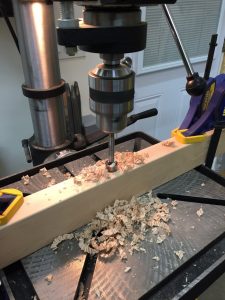
Use a drill press and fence to drill the pin holes.
Why use a 7/8″ poplar dowel? 3/4″ or 1″ would also work, but 7/8″ was the largest and straightest hardwood dowel stock my local home center had on hand. Be sure to chamfer the ends of each pin.
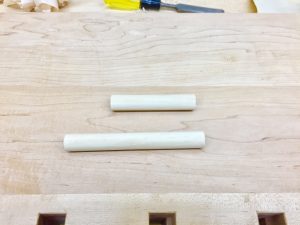
Make the pins as long or short as you like.
I cut one pin to 4-3/4″ long and one to 7″ long, which gives me options. I can use the shorter pin, which only sticks out 2″ for narrow boards and lowers the risk I’ll hit it with my thigh, and the longer pin works well for larger pieces.
Make sure your bench slave is about 1/8″ shorter than the distance from the floor to the top of the bench – this way it doesn’t get in the way if you leave it in the tail vise for extended periods of time. When not in use and when you need your tail vise back, it also stores easily under the bench, resting diagonally on the stretchers. I put a pin in each end of the bench slave, faced down in storage, because that helps keep this accessory from vibrating off the stretchers while I’m doing heavy work at the bench, such as mortising.
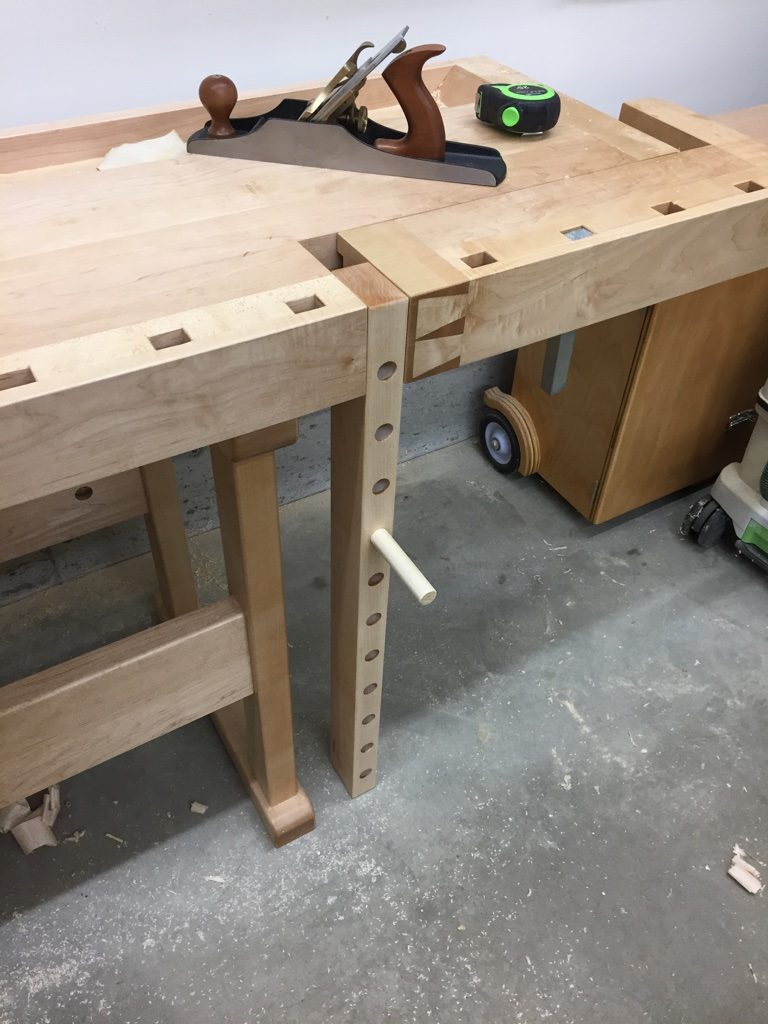
Make your deadman 1/8″ shorter than your benchtop height.
I finished this bench acessory with tung oil and a coat of wax. A simple bench slave like this gets a bit of a bad reputation, as folks often ooh and ahh over the integrated sliding deadman found on some more-complex benches. But I really like the straightforward simplicity of this design and its overall usefulness.
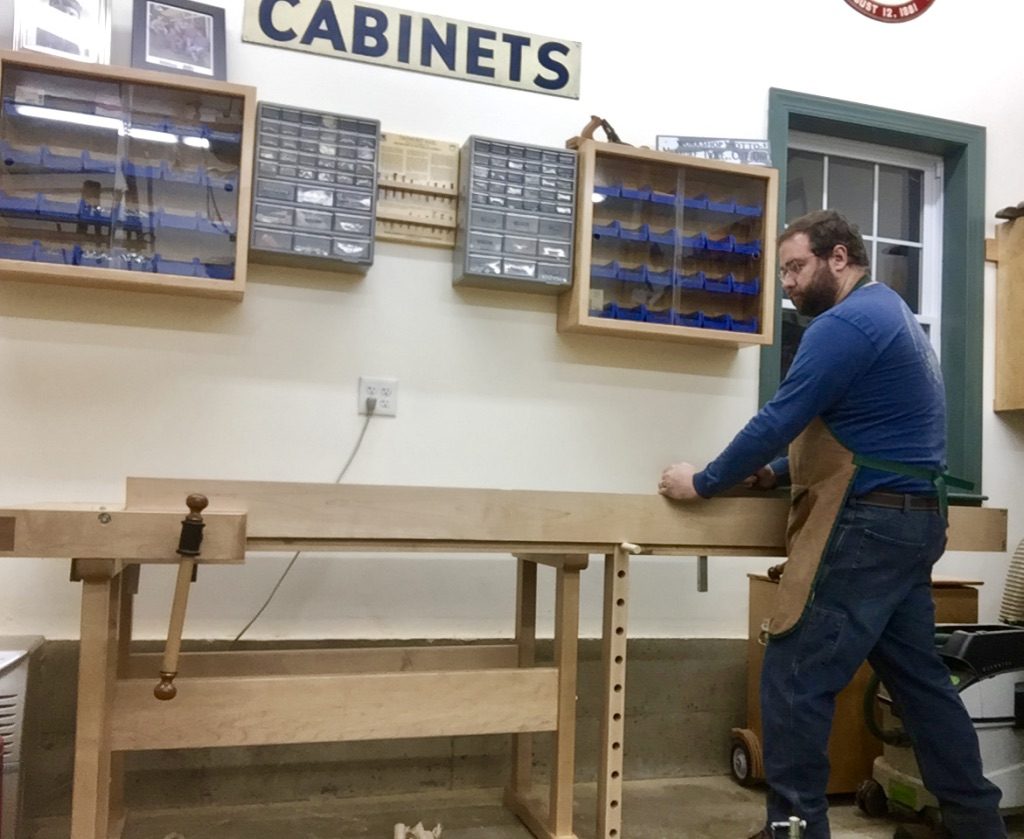
Bill Rainford jointing a board
If you’d like to learn about more jigs, fixtures and accessories for this workbench, please also check out my blog.
Editor’s note: Want to build Bill’s Tage Frid-inspired bench? Check out the February 2017 issue of Popular Woodworking Magazine, available now in print or as a PDF download.
Here are some supplies and tools we find essential in our everyday work around the shop. We may receive a commission from sales referred by our links; however, we have carefully selected these products for their usefulness and quality.









I built this same bench and deadman from Tage’s article in one of the early Fine Woodworking mags. I just cut a pine 2 x 4 to length and drilled the holes. No edge rounding needed. I use it frequently for about 30 years now.
This may be overdoing a simple design, but it might help to have another set of holes bored from the other side, between the opposite holes. That would double the number of positions for the pin.